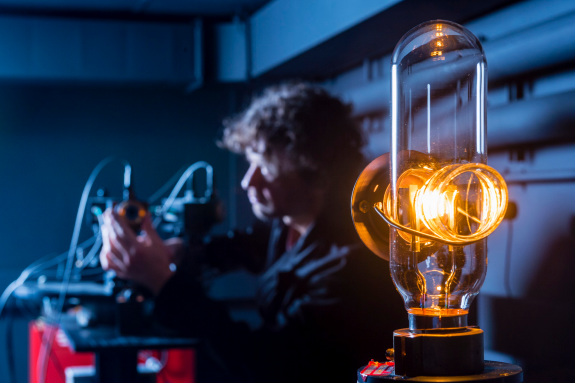
Consult all our featured articles
Dynamic calibration of pressure sensors
Pressure measurement in non-equilibrium conditions is required in many applications. For example, pressure must be monitored in the cylinders of an engine to study combustion phenomena, in an injection moulding press to study a moulding process, in a Pitot tube to determine the speed of an aircraft, or in a catheter to determine blood pressure. In applications like these the pressure quantity is in dynamic state, i.e. the measurand is constantly changing, including during measurement. In static state a sensor is characterized by its sensitivity for a given measurand, defined as the variation in output quantity divided by the corresponding variation in the measurand. The same calculation performed in dynamic state produces different sensitivity values.
Pesticides
Analytical chemistry - metrology in chemistry in particular - is currently undergoing major developments as a result of high demand from society for measurement of chemical compounds in the environment, health and agri-food sectors. In each of these fields, along with other industrial sectors, thousands of laboratories carry out millions of analyses every year. The metrological traceability of these measurements is not always adequately ensured in sensitive sectors such as environment and health. Pesticides are a prime example of a field where metrology in chemistry can play a significant role. The level of water pollution caused by these compounds is alarmingly high and numerous laboratories are analysing pesticides on a daily basis. Unfortunately, despite the implementation of sophisticated analysis techniques, traceability to the SI system is not always proved.
Gas flow measurement references
This file presents the national references developed by LNE-LADG (Associate Laboratory for Gas Flow Measurement) to ensure the traceability of high-pressure gas flow measurements.
The main feature of the traceability chain maintained by LNE-LADG is the use of critical flow Venturi nozzles as transfer standards. The Laboratory has used these nozzles since the early 1970s to generate and measure reference flow on calibration and test benches operating with air or natural gas.
This technology is used today in defining the value of the reference high-pressure natural gas cubic metre, established under a harmonization agreement between PTB (Germany), NMi (Netherlands) and LNE-LADG.
Graphite calorimetry
Since medical exposure is by far the most common source of artificial irradiation, there is a clear need to provide specific metrological references in this field. Radiotherapy in particular requires precise control of the doses administered in "target" volumes (for tumours), which in turn depends on highly accurate characterization of the doses produced by radiation sources (accelerators, cobalt).
To meet this need, metrologists must develop primary reference standards that represent as closely as possible the dose absorbed in biological environments, in irradiation conditions that are identical to those of human exposure.
Reference standards are defined in environments close to biological tissue, for their properties of interaction with matter (similar atomic number): air, water, graphite, etc.
Medical physicists thus characterize radiation beams in terms of absorbed dose to water.